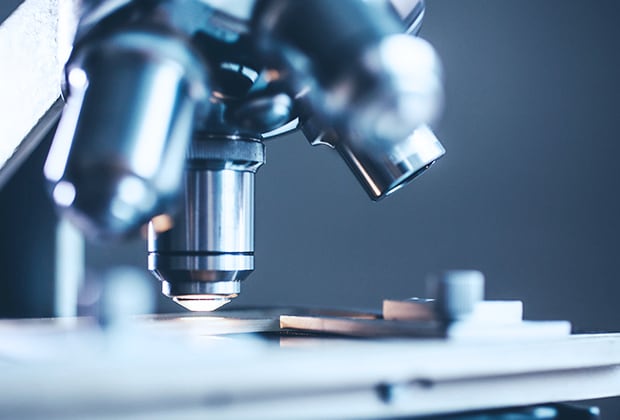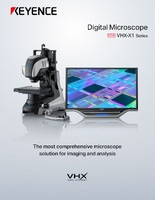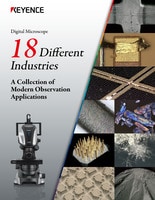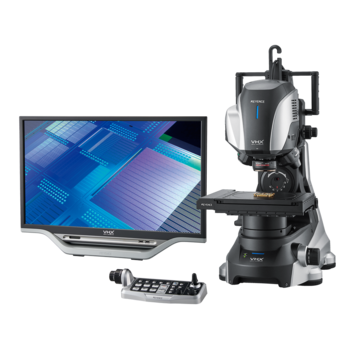Digital Microscopes
Microscope Illumination Methods
Common Illumination Methods

An important role in microscopy is how the sample is illuminated. Illumination methods are broadly classified into transmitted illumination and incident illumination. The appropriate method needs to be selected according to your specimen and purpose.
Transmitted illumination
Illuminates the back surface of the sample. This method is suitable for biological observation, such as colorless, transparent cells, and is used by general biological microscopes. There are two types of transmitted illumination: brightfield and darkfield:
- Brightfield illumination
A general method to observe samples by illuminating the back surface to make it transparent. Against a bright background, it projects the parts darker than the background. - Darkfield illumination
Illuminates the back surface, as with the brightfield illumination, but interrupts direct light to make the outline of the sample shine against a dark background. This method is suitable for observation of low-contrast cells and requires a darkfield condenser.
Incident illumination
Illuminates the front surface of a sample. This method is useful when observing 3D objects, such as materials and other industrial samples, as well as opaque samples. Stereoscopic microscopes generally utilize this type of lighting.
We’re here to provide you with more details.
Reach out today!

Types of Transmitted Illuminations
When using transmitted illumination with an optical microscope equipped with a condenser lens, there are three types of lighting: Koehler illumination, diffuse illumination, and critical illumination.
Koehler illumination
Gathers light to the backside of the objective lens. This is the most commonly used method for transmitted illumination and features bright and less-varied illumination. This method is indispensable for observation at high magnification.
Diffuse illumination
A light diffusing plate placed on the reflector enables uniform illumination, but passing through the plate makes the light slightly less bright.
Critical illumination
Gathers light at the surface of a sample. This methods generates bright illumination, but has a higher chance of being unevenly distributed.
We’re here to provide you with more details.
Reach out today!

Difference in Light Sources
The light source can differ depending on the microscope being used. It is necessary to select an appropriate light source based on an understanding of the characteristics of each light source.
For optical microscopes
- Natural light (ambient light)
Light from outside is sent to the reflective mirror to illuminate the sample. Direct sunlight must be avoided. An artificial light source, such as fluorescent light, can also be used instead of natural light. - Tungsten lamp
This inexpensive and readily available lamp, also called an incandescent lamp, is widely used in optical microscopes. - Halogen lamp
Compared with a tungsten lamp, the halogen lamp is more expensive, has a longer life expectancy, and features a near-white color with uniform brightness.
For fluorescence microscopes
- Mercury lamp
Also known as a high-pressure mercury lamp, this lamp is used as the light source for fluorescence observation to excite a wavelength specific to the fluorescent material. It can provide a strong power over a broad range of wavelengths, from ultraviolet to near-infrared, and can transmit light of a required wavelength using a filter. A wide variety of filters are available for different wavelengths, and a specific fluorescence can be selectively detected when a proper combination of fluorescence dye is being used. Another type of mercury lamp is the metal halide lamp that requires a high-voltage power supply in order to operate. - Xenon lamp
This type of lamp is generally used as the flashbulb on cameras and features high brightness. - LED lamp
Because LEDs emit light with a relatively narrow wavelength band, white light can be obtained by combining an LED and a fluorescent material or a combination of multiple LEDs. It features compact size, low power consumption, and long life, but the power may be poor at specific wavelengths depending on how the LEDs are combined.
We’re here to provide you with more details.
Reach out today!





